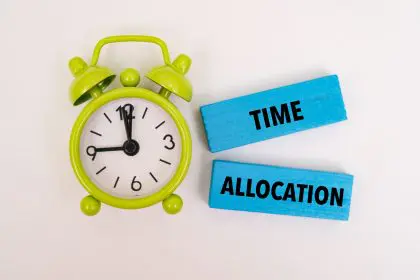Science shows the afternoon slump has met its match—and it’s not found in your coffee mug. Discover why a strategic snooze might be the brain boost you really need.
The afternoon energy crisis
It happens like clockwork. Around 2 or 3 p.m., energy levels plummet, concentration wavers, and productivity nosedives. This mid-afternoon slump affects nearly everyone, regardless of how well they’ve slept the night before or how nutritious their lunch was. For decades, coffee has been the go-to solution for combating this daily energy crisis, with office workers lining up at coffee shops and breakrooms for that essential afternoon caffeine jolt.
However, mounting research indicates that the true antidote to afternoon fatigue might not be in your coffee mug but rather on your couch or office nap pod. While caffeine provides a temporary energy boost, short afternoon naps deliver more comprehensive cognitive benefits with fewer downsides. This revelation is reshaping how health-conscious professionals approach their daily routines and prompting forward-thinking companies to incorporate nap-friendly policies into their workplace cultures.
The science behind this seemingly counterintuitive finding reveals fascinating insights into how our brains function and recover throughout the day. Understanding the comparative benefits of napping versus caffeine consumption can help you make more informed choices about how to optimize your brain function during that challenging afternoon period.
How caffeine affects your brain
Caffeine has earned its reputation as the world’s most popular psychoactive substance for good reason. When consumed, it blocks adenosine receptors in your brain, preventing the natural buildup of this sleep-inducing compound. This blockage creates a temporary feeling of alertness and reduced fatigue that can last several hours, depending on your individual metabolism.
The cognitive benefits of caffeine include enhanced attention, improved reaction time, and increased ability to concentrate on repetitive tasks. For many people, a cup of coffee provides exactly the boost needed to power through afternoon meetings or complete detail-oriented work.
However, caffeine comes with notable limitations. First, it doesn’t actually replenish energy—it merely masks fatigue temporarily. When the effects wear off, the original tiredness often returns, sometimes with greater intensity. Additionally, caffeine has a half-life of approximately 5-6 hours in most adults, meaning that afternoon consumption can interfere with nighttime sleep, potentially creating a cycle of sleep deprivation that worsens the next day’s afternoon slump.
Regular caffeine consumers also develop tolerance, requiring increasingly larger doses to achieve the same alertness effects. This escalation can lead to side effects like jitteriness, increased heart rate, digestive issues, and anxiety—particularly problematic for those already prone to stress or anxiety disorders.
The napping advantage for cognitive function
In contrast to caffeine’s masking effect, napping addresses afternoon fatigue at its source by providing actual neural rest and recovery. During a short nap, your brain begins clearing adenosine—the very compound caffeine blocks—allowing for genuine refreshment rather than chemical override.
Research conducted at prominent sleep institutes has demonstrated that even brief naps produce remarkable cognitive enhancements. A 20-30 minute nap improves alertness by 54%, working memory by 34%, and logical reasoning by 28% compared to pre-nap baselines. These improvements typically last 2-3 hours after waking, often without the crash associated with caffeine’s wearing off.
What makes napping particularly effective is its comprehensive impact across multiple cognitive domains. While caffeine primarily boosts attention and alertness, napping enhances these functions while also improving creativity, emotional regulation, and memory consolidation. This broader range of benefits makes napping the superior choice for cognitive tasks requiring complex thinking, innovation, or emotional intelligence.
1. Memory consolidation: The nap superpower
The first major advantage naps hold over caffeine is their remarkable effect on memory. When you take a nap, particularly one that includes some non-REM slow-wave sleep, your brain actively processes and consolidates recently acquired information, transferring it from temporary storage to more permanent neural networks.
Research from Germany’s University of Lübeck found that students who napped after learning new information retained significantly more than those who remained awake, even when the awake group consumed caffeine. This memory-boosting effect appears strongest for declarative memory—facts, figures, names, and explicit information—precisely the type of data many professional and academic tasks require.
Caffeine, despite its alertness benefits, does not facilitate this memory consolidation process. In fact, some studies suggest it may slightly impair certain memory functions while enhancing others, creating an uneven cognitive profile compared to napping’s more balanced effects.
For professionals who need to retain important information from morning meetings or training sessions, an afternoon nap might be the most effective way to ensure that knowledge becomes permanently accessible rather than fading by day’s end.
2. Creativity and problem-solving enhancement
The second cognitive domain where napping dramatically outperforms caffeine is in creative thinking and problem-solving ability. During sleep, even brief sleep, your brain forms new connections between seemingly unrelated concepts and identifies novel patterns—processes that underlie creative insights and innovative thinking.
Studies examining creative problem-solving have found that participants who took a 90-minute nap containing REM sleep were 40% more likely to solve previously challenging problems compared to those who remained awake, regardless of caffeine consumption. This effect appears related to the unique neural activity during REM sleep, which activates associations between distant concepts in ways that rarely occur during wakefulness.
While caffeine may help you focus on implementing existing solutions, napping appears to help you discover new ones. This distinction makes napping particularly valuable for roles requiring innovation, design thinking, troubleshooting, or strategic planning.
3. Emotional reset and stress reduction
The third significant advantage napping holds over caffeine lies in emotional processing and stress management. The mid-afternoon period often coincides with peak cortisol decline, making it a particularly vulnerable time for stress, emotional reactivity, and poor decision-making based on emotional states rather than logical analysis.
Research from the University of Michigan found that a 30-minute nap reduced frustration, impulsivity, and negative emotional responses while increasing tolerance for frustration. Caffeine, by contrast, can sometimes amplify stress responses and anxiety, particularly in individuals already experiencing elevated stress levels.
This emotional regulation benefit makes napping especially valuable before high-stakes meetings, difficult conversations, or situations requiring emotional intelligence and interpersonal sensitivity. The emotional reset provided by a brief sleep period allows for more measured responses and better perspective-taking abilities.
4. Long-term brain health benefits
Beyond immediate cognitive enhancement, regular napping appears to offer neuroprotective effects that caffeine cannot match. Population studies examining cultures with traditional afternoon siesta practices find lower rates of cognitive decline and neurodegenerative diseases among regular nappers.
The brain’s glymphatic system—the recently discovered waste clearance mechanism that removes potentially harmful proteins and metabolites—activates powerfully during sleep. Even short naps appear to trigger this cleaning process to some degree, potentially reducing the accumulation of compounds associated with cognitive decline.
Caffeine, while offering certain health benefits in moderate consumption, does not provide these same neuroprotective effects. In fact, excessive caffeine consumption, particularly later in the day, can disrupt nighttime sleep quality, potentially counteracting any long-term brain health benefits regular good sleep provides.
The ideal nap strategy
To maximize cognitive benefits while avoiding the grogginess associated with longer sleep periods, research suggests an optimal napping approach:
Duration: The ideal cognitive enhancement nap lasts 10-30 minutes. This timing allows for beneficial non-REM sleep without entering deeper sleep stages that cause sleep inertia (the temporary disorientation and grogginess upon waking from deep sleep).
Timing: The optimal window for an afternoon nap typically falls between 1:00 and 3:00 p.m., coinciding with the natural post-lunch dip in alertness and body temperature that most people experience. Napping later risks interfering with nighttime sleep.
Environment: Create sleep-friendly conditions by finding a dark, quiet space with a comfortable temperature. Even if perfect conditions aren’t available, using an eye mask, noise-canceling headphones, or a dedicated nap space can significantly improve nap quality.
Technique: The “coffee nap” technique combines the benefits of both approaches—drink coffee immediately before a 20-minute nap. You’ll wake just as the caffeine takes effect, experiencing both the restorative benefits of the nap and the alertness boost from caffeine.
Implementing nap culture in modern life
Despite the compelling evidence favoring napping, significant cultural barriers remain in many workplaces. However, this is changing as forward-thinking companies recognize the productivity benefits of well-rested employees. Organizations including Google, NASA, and Nike have implemented nap pods or dedicated quiet rooms for employees seeking midday rest.
For those without access to such amenities, creative solutions exist. Finding an unused conference room, reclining in your parked car, or even putting your head down at your desk for 15 minutes can provide meaningful benefits. The key is giving yourself permission to prioritize this evidence-based approach to cognitive enhancement.
Some productivity experts recommend scheduling an afternoon “meeting with yourself” that blocks out 30 minutes for rest. This deliberate approach helps overcome the cultural resistance many feel toward napping, reframing it as a strategic performance enhancement rather than a sign of laziness.
A balanced approach
While research increasingly favors napping over caffeine for comprehensive brain function enhancement, the most practical approach for many people involves strategic use of both. Caffeine offers advantages in situations requiring immediate alertness for relatively straightforward tasks, while napping provides superior benefits for complex thinking, creativity, and emotional balance.
Understanding your specific cognitive needs for different parts of your day and week can help you make optimal choices. On days filled with creative problem-solving, strategic planning, or emotionally challenging interactions, prioritizing a nap might serve you best. For days dominated by routine tasks requiring sustained attention, caffeine might be the more practical choice.
Ultimately, the growing body of research comparing these two approaches to combating the afternoon slump reveals that our traditional reliance on caffeine might benefit from reconsideration. By incorporating strategic napping into our routines, we might not only enhance our immediate cognitive performance but also support long-term brain health in ways that no amount of coffee can accomplish.
















